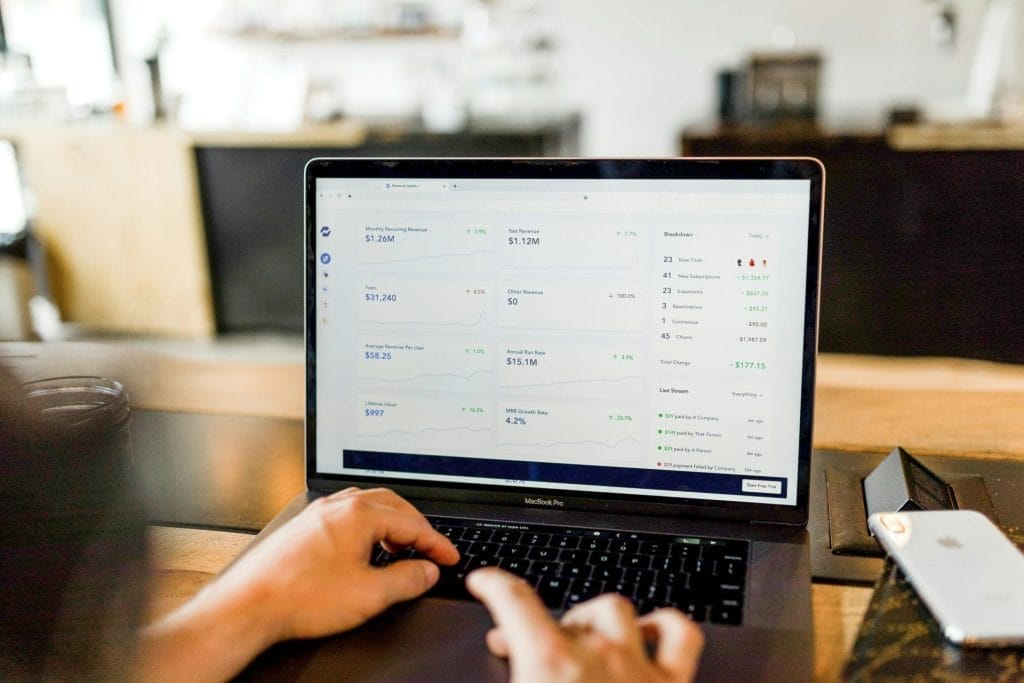Revy Blogs
Dynamic Pricing Software and Revenue Management: The Keys to Unlocking Revenue Potential

REVY + REVENUE MANAGEMENT
By prioritizing revenue potential, implementing strategic planning, and utilizing effective off-season strategies, your rental can achieve high occupancy rates and optimize their earnings throughout the year.
In today’s fast-paced world of short-term rentals and hospitality, staying ahead requires more than just offering a great property. With fluctuating market demands, local events, and ever-changing guest expectations, dynamic pricing and skilled revenue management have become indispensable tools for success. Whether you own an Airbnb, oversee a luxury vacation rental, a boutique hotel, or a portfolio of properties, combining technology with human expertise can significantly elevate your revenue potential.

What is Dynamic Pricing Software?
Dynamic pricing software, such as Wheelhouse, PriceLabs, or Beyond Pricing, leverages data analytics and machine learning to adjust nightly rates based on real-time market conditions. These tools analyze a variety of factors, including:
- Seasonal trends
- Day-of-week demand patterns
- Local events
- Competitor pricing
- Historical performance
Unlike static pricing, which sets fixed rates regardless of market shifts, dynamic pricing ensures your property is competitively priced while maximizing revenue during high-demand periods and capturing bookings during slower times.

The Research Supporting Dynamic Pricing
1. Revenue Increases of 10-40%
Studies show that properties using dynamic pricing software often experience a 10-40% increase in revenue compared to those relying on fixed pricing. For instance, Beyond Pricing has claimed that their software can boost revenue by as much as 35%, while other tools like Wheelhouse report similar results across their user base.
2. Optimized ADR and Occupancy Rates
Research from the Cornell Center for Hospitality Research highlights how dynamic pricing strikes a balance between Average Daily Rate (ADR) and occupancy:
- During peak demand periods, rates adjust upward to capture maximum revenue.
- In slower seasons, prices drop to attract more bookings, ensuring higher occupancy rates. This balance leads to improved Revenue Per Available Room (RevPAR), a key metric for measuring property performance.
3. Increased Market Competitiveness
Dynamic pricing software continuously monitors local market trends, competitor pricing, and seasonal fluctuations. According to AirDNA’s 2023 report, listings utilizing dynamic pricing tools performed better in search rankings on platforms like Airbnb. Higher occupancy and guest satisfaction metrics helped these properties gain visibility and outperform competitors.

Revy Pricing Info
Shared Success Model: 5% commission on total gross revenue.
Average Increase: 18% improvement in gross booking revenue.
Plans: Revy Pro (5%): Ideal for Airbnb hosts. Includes listing audit, dynamic pricing, manual adjustments, and expert advisor.
Revy Enterprise (Custom): Best for hotels and large operators. Includes same features as Revy Pro.
Dynamic Pricing Software: Managed by Revy, includes market data analysis and manual adjustments.
Onboarding Time: Typically 5-10 business days.
The Role of a Revenue Manager
Dynamic pricing software is a powerful tool, but it doesn’t replace the need for a revenue manager. These experts bring human insight to complement the automation, ensuring the software’s algorithms align with your business goals and adapt to unique market circumstances.
Connor, Co-Founder of Revy, explains:
“Just like QuickBooks needs an accountant, dynamic pricing software needs a revenue manager. Buying Wheelhouse doesn’t make you a revenue expert—that’s where Revy comes in.”
Key Responsibilities of a Revenue Manager:
- Customizing Pricing Strategies: Tailoring software rules to reflect unique property features, local demand, and market nuances.
- Monitoring Competitors: Analyzing competitor behavior and staying one step ahead in pricing strategies.
- Forecasting Demand: Using data to predict future trends and adjust pricing proactively.
- Identifying Upsell Opportunities: Implementing add-ons such as early check-in or late check-out fees to boost per-booking revenue.
- Driving Direct Bookings: Collaborating with marketing teams to reduce dependency on OTAs (Online Travel Agencies).

The Synergy Between Software and Revenue Managers
Custom rules and triggers are the backbone of maximizing the potential of dynamic pricing software and property management systems (PMS) like Hostaway. While the software provides the foundation for data-driven adjustments, only a skilled revenue manager can set up and refine these rules to meet the unique needs of a property. When used together, dynamic pricing software and a skilled revenue manager create a winning combination. Here’s how they complement each other:
- Automating Routine Adjustments:
Software handles daily rate changes based on real-time data, while managers focus on big-picture strategies. - Customizing for Unique Situations:
Revenue managers can adjust for anomalies like unexpected events, competitor closures, or niche market trends that software alone might overlook. - Monitoring and Fine-Tuning Performance:
Using analytics from the software, managers identify underperforming dates or units and make targeted improvements. - Optimizing Across Portfolios:
For those managing multiple properties, revenue managers can group similar units and apply tailored strategies to optimize revenue across the board.

Examples of Custom Rules and Triggers Only Possible When Pricing Software Is Being Used By Competent Revenue Managers
Length of Stay Discounts
- Purpose: Attract longer bookings while reducing turnover costs.
- Implementation:
– Navigate to the pricing section of your property listing.
– Add weekly discounts (e.g., 10%) and monthly discounts (e.g., 25-30%). - Outcome: Improved visibility for long-term search filters and reduced cleaning costs.
Weekend vs. Weekday Minimum Night Stays
- Purpose: Protect prime weekend nights while keeping weekdays competitive.
- Implementation:
– Use tools like Wheelhouse or PriceLabs to configure rules.
– Set a global minimum of 2 nights, with a 3-night minimum for Fridays and Saturdays. - Outcome: Higher weekend ADR and fewer turnovers during peak days.
Gap Night Rules
- Purpose: Maximize occupancy by filling single-night gaps.
- Implementation:
– Enable the “Gap Night Rules” feature in your pricing software.
– Set a 1-night minimum for gaps, with a 3-night lead time. - Outcome: Better utilization of inventory during high-demand periods.
Event-Based Pricing
- Purpose: Capture higher revenue during local events and festivals.
- Implementation:
– Identify key local events and increase rates by 20-50% during those dates.
– Use dynamic pricing tools to automate annual adjustments for recurring events. - Outcome: Higher ADR during periods of peak demand.
Slashed Pricing Tricks
- Purpose: Boost click-through rates and view-to-book ratios on platforms like Airbnb.
- Implementation:
– Add a small length-of-stay discount (e.g., 9%) and a 10% markup for Airbnb bookings. - Outcome: Creates psychological appeal while maintaining rate parity across OTAs.
Early Check-In / Late Check-Out Upsells
- Purpose: Generate additional revenue from frequent guest requests.
- Implementation:
– Add upsells for early check-in and late check-out with flat fees (e.g., $50 per reservation). - Outcome: Enhanced guest experience and increased REVPAG (Revenue Per Available Guest).
Extra Guest Fees
- Purpose: Drive more revenue from larger groups while remaining competitive for smaller parties.
- Implementation:
– Set a base rate for a specific number of guests (e.g., 4 for a 2-bedroom unit).
– Add a per-guest fee beyond that number (e.g., $30 per additional guest). - Outcome: Maximized revenue per available guest and offset costs for larger groups.

Why ‘Set It and Forget It’ Doesn’t Work
While dynamic pricing software is a game-changer, it’s not a plug-and-play solution. A “set it and forget it” approach can lead to missed revenue opportunities, particularly for unique or rural properties with fewer comparables. Here’s why:
1. Lack of Market Context:
Algorithms may struggle to price properties with unique features or in niche locations accurately. Revenue managers fill this gap with localized expertise.
2. Missed Demand Fluctuations:
Software may overlook sudden market shifts, such as local festivals or competitor closures, requiring human oversight to adapt quickly.
3. Suboptimal Rule Configurations:
Default software settings are often too broad. Without customization, properties risk underperforming during premium periods or overpricing during low demand.

Real-World Benefits of Dynamic Pricing and Revenue Management
1. Increased ADR and Occupancy:
Dynamic pricing ensures you capitalize on peak demand while maintaining steady bookings during slow periods.
2. Improved RevPAR:
Balancing ADR and occupancy leads to consistently higher revenue per available room.
3. Smarter Long-Term Planning:
Revenue managers leverage historical data to make informed decisions about marketing, staffing, and property upgrades.
4. Competitive Edge:
With a revenue manager fine-tuning your pricing strategy, you can outperform competitors relying solely on basic tools or intuition.

Getting Started
- Choose the Right Software:
Evaluate tools like Wheelhouse, PriceLabs, or Beyond Pricing based on your needs and property portfolio. - Hire a Revenue Manager:
Partner with a professional or a service like Revy to ensure your software delivers optimal results. - Set Clear Goals:
Define success metrics—whether it’s higher ADR, better occupancy, or a balance of both. - Leverage Data and Adapt:
Use insights from your software and manager to refine strategies continuously. Market conditions change, and so should your approach.

Conclusion
Dynamic pricing software and revenue management expertise are investments in your property’s financial health. Together, they provide the perfect balance of automation and strategic oversight, enabling you to maximize revenue, improve guest satisfaction, and stay ahead in a competitive market. Whether managing a single property or a diverse portfolio, combining these tools and expertise can transform your business into a revenue powerhouse.

Frequently Asked Questions (FAQ)

Keiran Griffiths
Author Biography
Keiran Griffiths is the co-founder, Chief Marketing Officer, and Senior Revenue Manager at Revy. He wears many hats, but his primary goal is to grow Revy by increasing the revenues of its clients. With extensive experience in marketing and consulting within the hospitality industry, Keiran understands the key strategies to drive new revenue. He is passionate about sharing his insights and tips to help clients achieve their financial goals and optimize their business performance.


